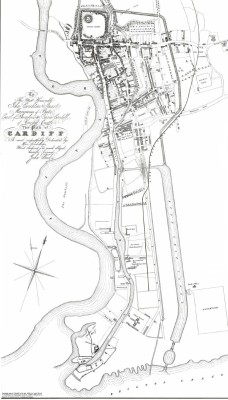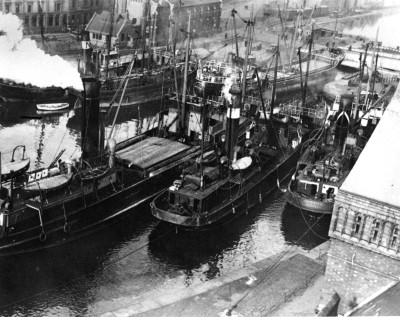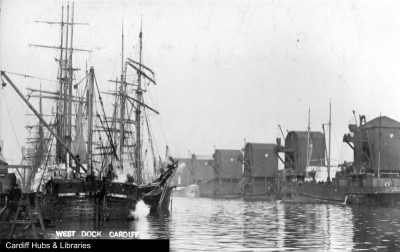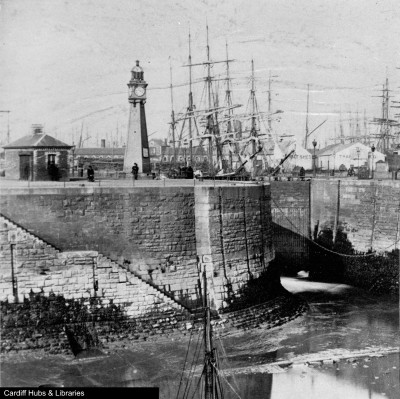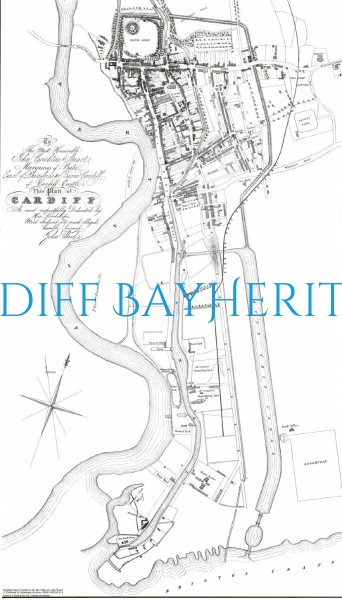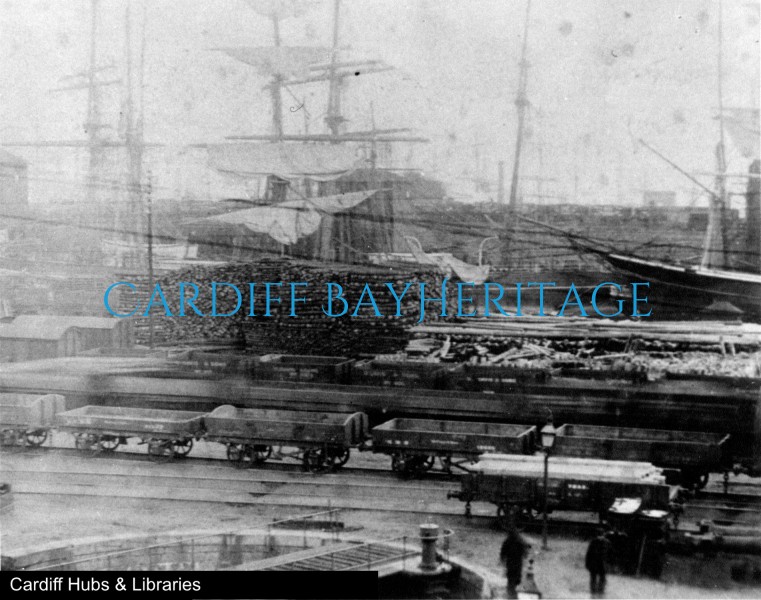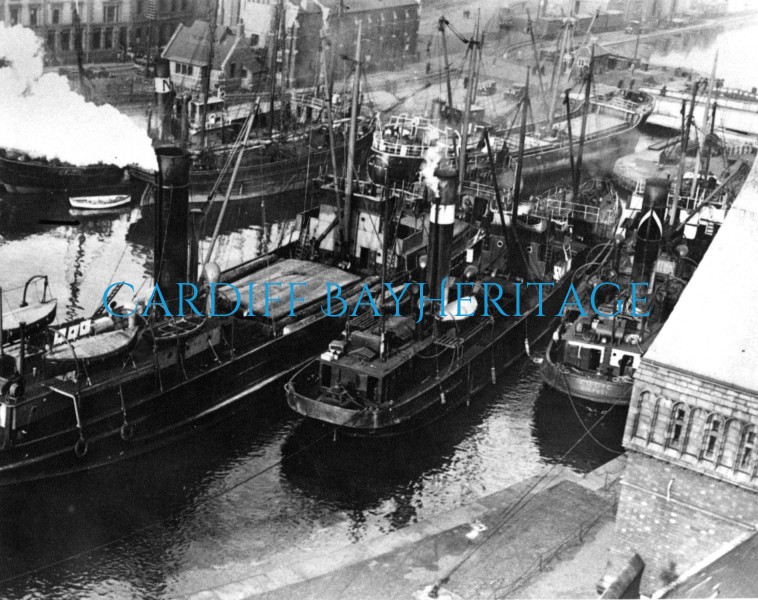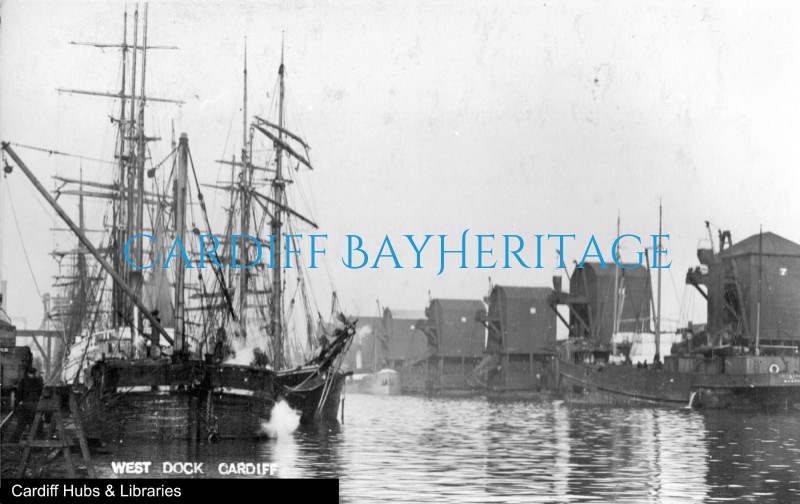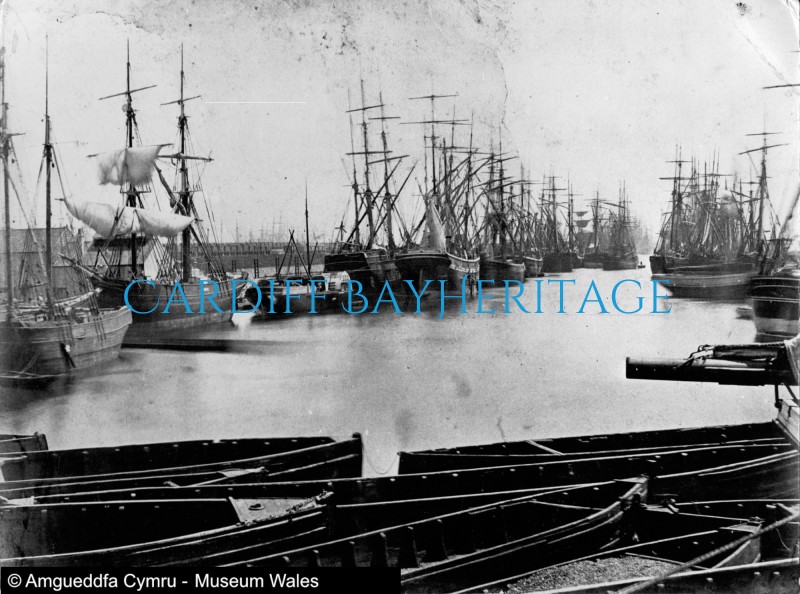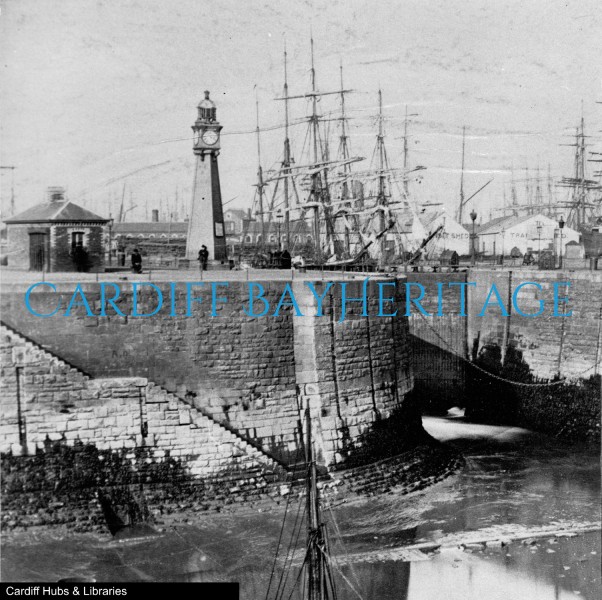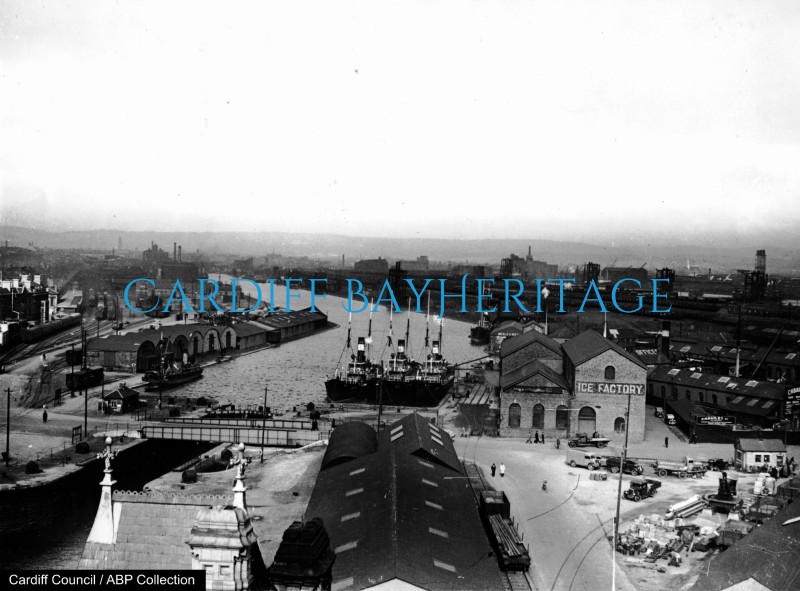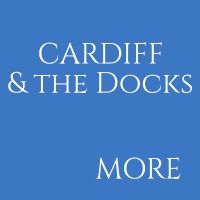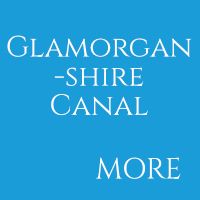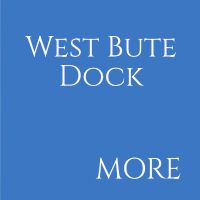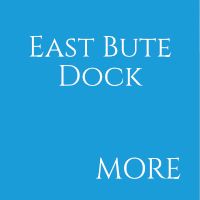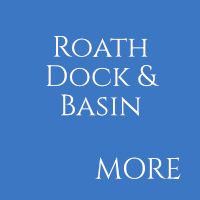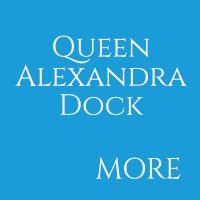
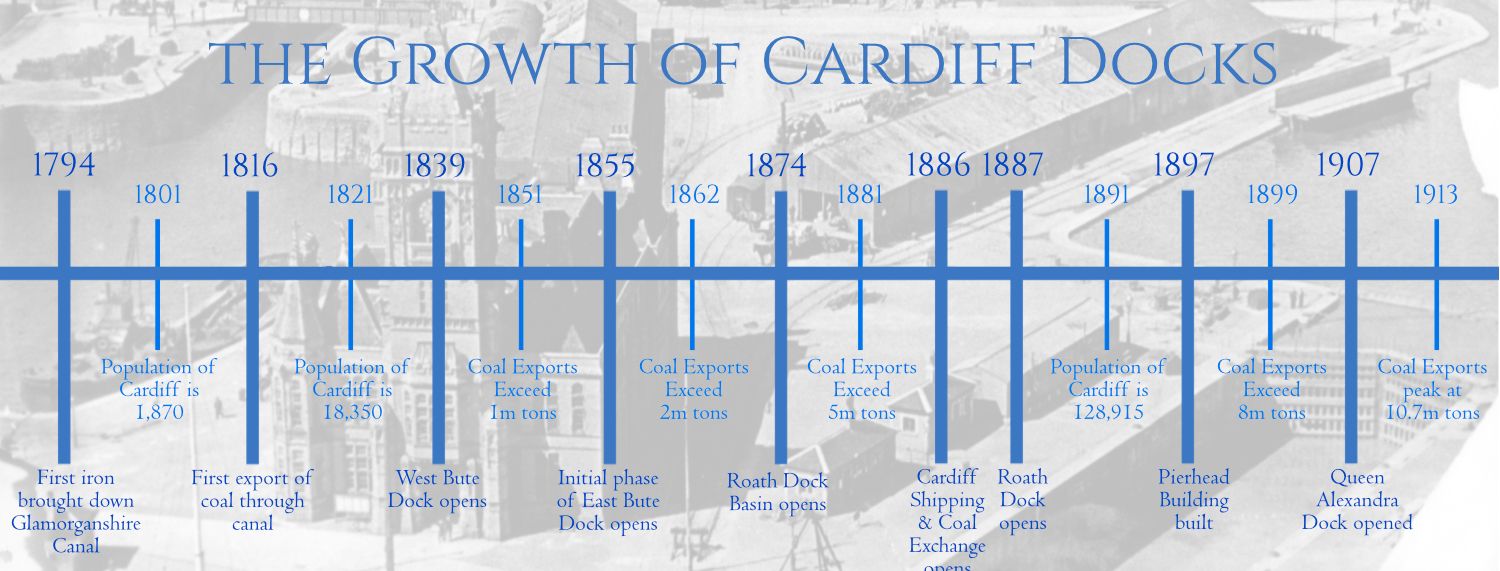
West Bute Dock
The 2nd Marquis of Bute owned large areas of mineral rights in the South Wales valleys. Some had been leased and coal was being mined at great profit. He decided it was time he did the same.
One major obstacle was getting the coal to market. The Glamorganshire Canal was already over-crowded. The Marquis also owned land in Cardiff and an Act of Parliament in 1830 gave consent for him to build “The Bute Ship Canal”
The new dock was 4000 feet long and 200 feet wide with an entrance lock 47 feet wide. Expenditure for construction was £338,000 (around £45m today).
The dock was opened on 9 October 1839 to great celebrations.
Taff Vale Railway Company took a lease from 1841 bringing railway lines down the east side of the dock to handle the export of iron and coal from Merthyr Tydfil.
The west side was for warehousing and the import trade.
Coal shipments started at an annual 43,651. By 1854 total trade was 1.33m tons and an average of 130 ships a week were being handled.
The dock had become congested.
More space was needed.
-
map
Map of 1840 show River Taff, Glamorganshire Canal and West Bute Dock
- using its original name of Bute Ship Canal.Map o 1840 yn dangos Afon Taf, Camlas Morgannwg a Doc Gorllewinol Bute
- yn defnyddio'i enw gwreiddiol, Camlas Longau Bute. -
009 0025
The coal came down to the docks in railway wagons which were then loaded with
imported pitprops to go back up to the valley minesRoedd y glo yn dod i lawr i'r dociau mewn wagennirheilffordd a lwythwyd gyda
physt pwll wedi'u mewnforio i fynd yn ôl i fyny i lofeydd y cymoedd. -
009 0025
Steamships waiting to pass through the inner lock.
Photo taken in early 1900s from Pierhead Building.
The basin is now the Roald Dahl PlassAgerlongau yn aros i fynd drwy'r loc mewnol.
Llun wedi'i dynnu ar ddechrau'r 1900au o Adeilad y Pierhead.
Y basn yw Roald Dahl Plass erbyn hyn -
011 0004
The dock was arranged so that all coal loading was done from the tips, also referred to as staithes, on the east side of the dock - 6 of them can be seen here, with 2 in operation.
Sailing ships line the opposite side unloading their cargoes..Trefnwyd y doc fel bod yr holl lo’n cael ei lwytho o'r tomenni, y cyfeirir atynt hefyd fel glanfeydd, ar ochr ddwyreiniol y doc - gellir gweld 6 ohonynt yma, gyda 2 ar waith.
Mae llongau hwylio mewn llinell gyferbyn, yn dadlwytho eu cargo. -
011 0006
Loading sailing vessels from lighters.
A lighter is a flat-bottomed barge used to transfer goods and passengers to and from moored ships. Lighters were traditionally unpowered and were moved and steered using long oars called "sweeps" and the motive power of water currents.Llwytho llongau hwylio o longau dadlwytho.
Mae llong ddadlwytho yn gwch â gwaelod gwastad a ddefnyddir i drosglwyddo nwyddau a theithwyr i ac o longau wedi'u hangori. Yn draddodiadol, roedd llongau dadlwytho yn ddi-bŵer ac yn cael eu symud gan ddefnyddio rhwyfau hirion a grym symudol ceryntau dŵr. -
011 0007
The lock is full of sailing ships waiting for the tide to allow them to leave.
This photo was taken before the construction of the Pierhead Building which was built in 1897.Mae'r loc yn llawn llongau hwylio yn aros i'r llanw ganiatáu iddyn nhw adael.
Tynnwyd y llun hwn cyn adeiladu Adeilad y Pierhead ym 1897. -
301 6201
In later years the dock became the home to the Neale & West fleet of trawlers - seen here at the Ice Factory in a photo taken in 1944 from the top of the Pierhead Building. Yn ddiweddarach daeth y doc yn gartref i fflyd Neale & West o longau pysgota - a welir yma yn y Ffatri Iâ mewn llun a dynnwyd ym 1944 o ben Adeilad y Pierhead.
